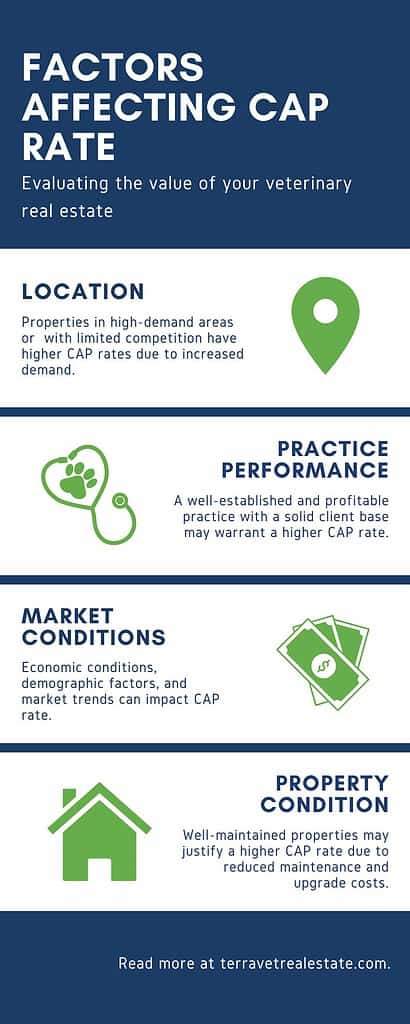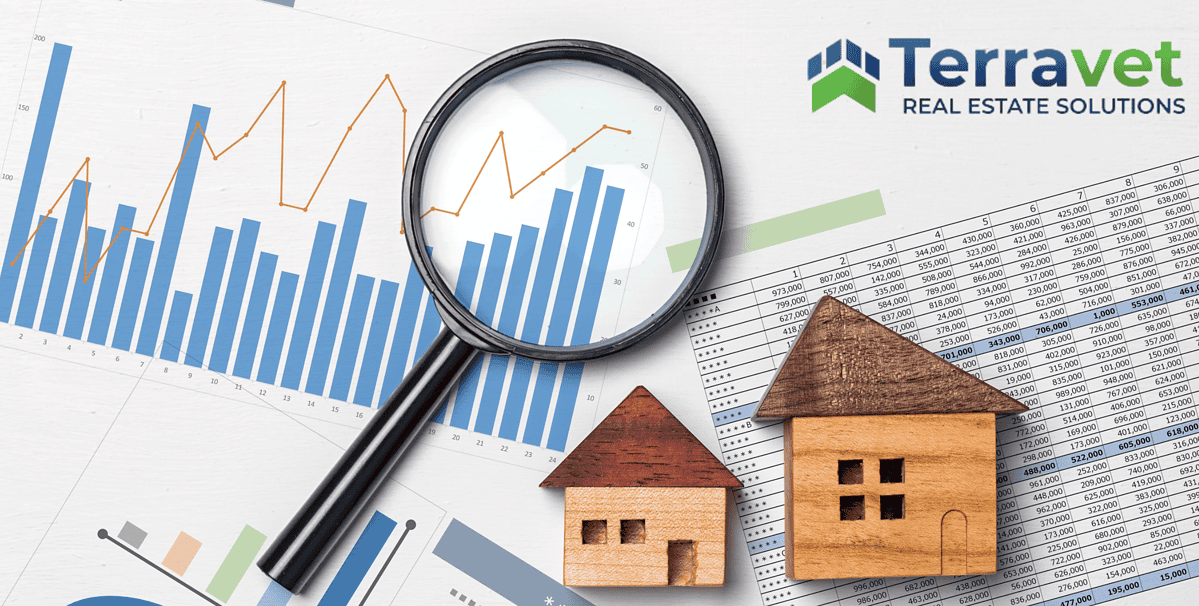If you’re a veterinarian considering retirement or looking to sell or lease your property, understanding the intricacies of veterinary real estate is crucial. One fundamental concept that can greatly impact your decision-making process is the Capitalization Rate (CAP rate). In this article, we will delve into the world of CAP rates and explore their significance in the context of veterinary real estate. By gaining a clear understanding of CAP rates, you’ll be better equipped to make informed choices that align with your financial goals and aspirations.
What is CAP Rate?
CAP rate, or capitalization rate, is a key financial metric used to evaluate the profitability and value of an investment property. Specifically, it measures the rate of return an investor can expect from a property based on its Net Operating Income (NOI). What is Net Operating Income? Net Operating Income is the profit generated by an investment property. To calculate a property’s Net Operating Income, you take rent collected from the tenant and subtract building expenses paid by the landlord. Once you know your property’s NOI you can then calculate your property’s CAP rate using this formula, NOI / Property Value = CAP rate.
Example:
$100,000 / $1,250,000 = 8%
It’s also important to understand that a CAP rate is an inverse of a multiple of Net Operating Income (NOI). To determine the multiple equal to a cap rate you divide 1 by the CAP rate (1 / CAP rate). The formula to calculate a property’s value based on a multiple of rent is, 1/CAP rate x NOI = Property Value
Example:
1 / .08 x $100,000 = $1,250,000
In the case of veterinary real estate, the CAP rate provides valuable insights, as it helps determine the potential return on investment and establishes a basis for pricing the property.
Calculating CAP Rate
To calculate the CAP rate, you divide the property’s Net Operating Income by its market value or purchase price. The NOI represents the income generated by the veterinary after accounting for operating expenses like maintenance, reserves for capital expenditure, and other property related expenses. It’s worth noting that properties with truly triple net leases have few expenses and as such the rent on an unlevered NNN property should be very similar to the property’s NOI. By dividing the NOI by the property value, you arrive at a percentage that represents the CAP rate.
The Importance of CAP Rate for Owners of Veterinary Real Estate
- Evaluation of Return on Investment: CAP rate allows real estate owners to assess the financial viability of selling or leasing their property. A higher CAP rate implies a potentially higher return on investment, indicating a more desirable opportunity.
- Attracting Potential Buyers or Lessees: Buyers and lessees often use CAP rate as a preliminary screening tool when considering their opportunity with a property. A competitive CAP rate can make your property more attractive to potential buyers or lessees, facilitating a smooth transition and maximizing the value of your investment.
- Benchmark for Market Comparison: CAP rates serve as benchmarks for comparing investment properties in the market. By researching CAP rates for similar properties in your area, you can gain insights into prevailing market trends, negotiate better terms, and make well-informed decisions.
- Pricing Strategy: Understanding the CAP rate helps veterinary landlords set a reasonable asking price for their property. By considering the prevailing CAP rates and the specific characteristics of their property, veterinary landlords can arrive at an appropriate pricing strategy that maximizes their return while attracting potential buyers or lessees.
Factors Influencing CAP Rate in Veterinary Real Estate
- Location: Properties in high-demand areas or regions with limited competition may command higher CAP rates due to increased demand.
- Practice Performance: A well-established and profitable practice with a solid client base and consistent revenue streams may warrant a higher CAP rate.
- Market Conditions: Economic conditions, demographic factors, and market trends can impact CAP rates. Understanding these dynamics will help veterinary landlords assess the potential risks and rewards of their investment.
- Property Condition: The overall condition of the property’s physical infrastructure and equipment can influence the CAP rate. Well-maintained properties may justify a higher rate due to reduced maintenance and upgrade costs.
What is a Good CAP Rate?
Determining what is a good CAP rate depends on various factors and individual circumstances, and evaluating CAP rates within the specific context of market conditions, property type, and location is crucial. At Terravet, we recognize the importance of determining the strength of your CAP rate. Our team of experienced professionals can therefore provide invaluable assistance in assessing your CAP rate accurately and determining its competitiveness in the market.
Conclusion
In conclusion, the CAP rate is a critical tool for evaluating the value of veterinary real estate investments. At Terravet, we are dedicated to helping veterinary landlords achieve their financial goals while ensuring the continued success of their tenant. Contact us today to learn how we can assist you in your veterinary real estate journey.




